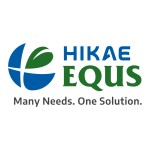What is green building?
Green building primarily focuses on reducing the environmental impact of a building’s construction and operation. It emphasizes using eco-friendly materials, energy-efficient technologies, and practices that minimize resource consumption and waste generation. Green building often involves strategies like installing solar panels, using recycled materials, and implementing water-saving fixtures.
What is sustainable building?
Sustainable building involves the use of practices and materials that prioritize environmental responsibility throughout a building’s entire life cycle. This approach aims to minimize the impact on the environment by focusing on energy efficiency, resource conservation, and reduced waste. Sustainable building practices contribute to creating structures that are environmentally friendly, energy-efficient, and promote a healthier living environment. Below is a simple table highlighting the key differences between sustainable building and normal building practices
What are ‘steel reinforced concrete EPS core’ panels
Sandwiched Panels are composite building materials that consist of an insulating EPS core sandwiched between two layers of reinforced concrete. This combination capitalises on the strengths of both EPS and concrete, resulting in an EPS panel that is not only lightweight but also highly efficient and sustainable. The result is a composite readymade walls panel that offers a wide range of benefits across various construction applications.
Are EPS panels considered sustainable building materials?
Yes, EPS panels can be considered sustainable building materials when used appropriately. EPS (Expanded Polystyrene) panels offer several sustainability benefits, including energy efficiency, lightweight construction, and recyclability. These panels provide excellent thermal insulation, helping reduce energy consumption for heating and cooling buildings. Additionally, their lightweight nature contributes to lower transportation emissions and reduced construction waste. EPS panels are also recyclable, allowing for the material to be reused or repurposed at the end of a building’s life cycle, further enhancing their sustainability credentials. When integrated into a holistic approach to sustainable construction, EPS panels can contribute to the creation of environmentally friendly and energy-efficient buildings.
Energy Efficiency and Environmental friendliness
One of the prime features of Sandwiched Panels is its exceptional energy efficiency. The EPS core acts as an effective thermal insulator, helping maintain comfortable indoor temperature year-round. This cuts the need for excessive heating or cooling, resulting in lower energy consumption and reduced utility bills for a lifetime. This feature also makes the buildings more environmentally friendly and economically sustainable, while it helps maintain the temperature inside, creating a more stable and comfortable living environment.
And that’s not all, EPS is recyclable and has a low environmental impact, compared to traditional construction materials. It is produced with minimal waste and can be reused in various applications, contributing to the reduction of construction-related carbon emissions. It scores a brownie by utilising ~ 70% lesser water as compared to concrete buildings; thus, helps conserve the water, one of the most valuable resources. No doubt it gets classified as a ‘green construction technology’ by most of the government bodies of the world.
Rapid Construction
The speed at which buildings can be erected using these panels is remarkable. The readymade walls can be manufactured off-site, allowing for a streamlined construction process, significantly reducing on-site labour and time. Thus, construction projects can be completed significantly faster, saving both time and money.
Structural Integrity
Reinforced concrete is known for its strength and durability, making it an ideal material for the exterior layers of the panels. Thus, despite being lightweight EPS panels offer excellent structural integrity. These readymade walls are suitable for a wide range of applications, from residential to commercial and industrial buildings. They are particularly well-suited for seismic-prone areas, as their flexible yet durable nature helps absorb the seismic forces.
Benefits of Sustainable Construction
Cost-Effective Construction
The cost-effectiveness is a significant driver behind their adoption by the construction industry. Reduced labour requirements, faster construction timelines, and energy savings, all contribute towards making a cost-effective building. Additionally, the extra-long lifespan and minimalistic maintenance for buildings constructed with these panels further enhance their cost-effectiveness.
Flexibility in Design
Architects and designers appreciate the flexibility it offers in design. These panels can be customised as retaining walls, roof panels, cladding walls, stair panels, floor panels, etc. to meet various aesthetic and functional requirements. They can be used for both exterior and interior applications, and their adaptability makes them suitable for a wide range of architectural styles.
Fire Resistance
Fire safety is often a top priority in construction, and EPS panel meet this requirement bang on. The concrete layers offer excellent fire resistance whereas EPS core is itself heat resistant, ensuring the safety of occupants in case of a fire outbreak This characteristic is especially crucial for multi-story buildings and high-density urban areas.
The readymade walls are ushering in a new era of construction, redefining how buildings are designed and constructed. Their energy efficiency, rapid construction, durability, and sustainability make them a compelling choice for a wide range of applications. While they may pose certain challenges, the benefits they offer are transforming the construction industry and paving the way for a more efficient, sustainable, and cost-effective future in building construction. As technology continues to advance and the demand for eco-friendly construction materials grows, these innovative panels are poised to play an even more significant role in the construction landscape.
Sustainable construction is a key component of green building practices, which aim to create environmentally responsible, resource-efficient, and healthy structures. As our planet faces increasing environmental challenges, the construction industry plays a vital role in mitigating its impact. By adopting sustainable practices, builders contribute to a more sustainable future, aligning with global efforts to combat climate change and promote ecological balance.
Sustainable construction is more than a trend; it’s a commitment to a better, more responsible future. As the construction industry evolves, embracing eco-friendly practices becomes imperative. By understanding the concept, recognizing its benefits, exploring examples, and acknowledging its importance in green construction, we pave the way for a more sustainable and resilient built environment.






Comments